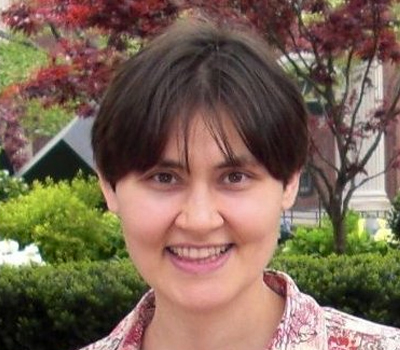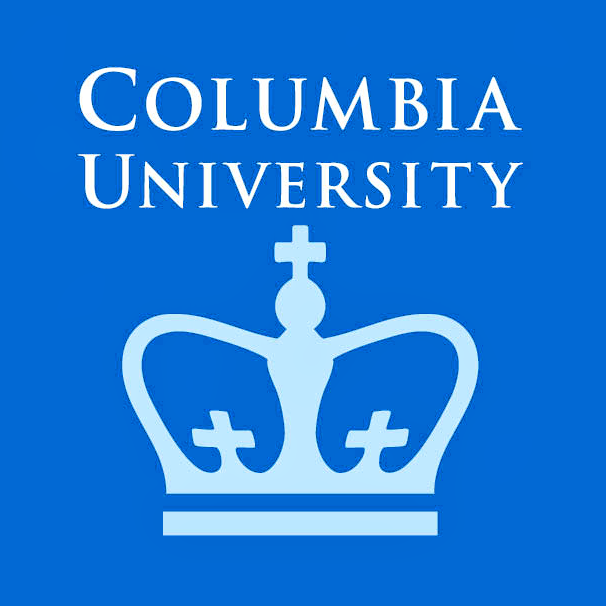Dr. Zelevinsky uses laser-cooled and trapped atoms in optical lattices to study ultracold chemistry and quantum optics
Imagine if someone asked you to count the passengers in a car that is whizzing by on a highway, and then to do the same when the car is stopped. Without question one could more precisely study the car that is not moving. In the same way, when scientists precisely study tiny atoms and molecules, they do so when the particles are almost perfectly still at temperatures near the absolute zero. Recently, using this technique, physicists have been focusing on studying the atom-molecule threshold regime, where the molecular bond between two atoms gets so long that the molecule is about to split. Particularly, they are able to observe and study an elusive phenomenon of subradiance, or collective suppression of light emission, which occurs because of the quantum physics of identical particles.
Dr. Tanya Zelevinsky's experimental group in atomic, molecular, and optical physics at Columbia University uses laser-cooled and trapped atoms in optical lattices to study ultracold chemistry and quantum optics. Her research goals include developing low-energy precision measurement techniques for quantum systems such as molecules that so far have been difficult to produce and manipulate with a high degree of control. She is therefore interested in applying the methods of quantum measurement to fundamental physical questions. In the near future, Dr. Zelevinsky will be studying simple diatomic molecules in a more strongly bound regime, that scientists call 'molecular clock'. This could shed light on whether the fundamental constants are truly constant, and whether there might be tiny forces that deviate from Newton's gravitational law at nanometer scales.
Dr. Zelevinsky currently has two main projects:
-
Laser Cooling Atoms: Dr. Zelevinsky begins by laser cooling atoms and then bonds them into molecules that are extremely cold.
-
Laser Cooling Molecules: Dr. Zelevinsky is working to directly laser cool molecules rather than creating them from laser-cooled atoms.While this technique is more difficult, if it is mastered, it could open new avenues in ultra-cold physics by creating exciting and unexplored states of matter.
Dr. Zelevinsky's experiments combine the techniques of state-of-the-art atomic clocks with the fields of ultracold molecules & quantum chemistry. This puts her in a position of unique strength to explore the regime of weak molecular bonding at an unprecedented level. Despite their exquisite precision, her experiments do not require elaborate facilities, but are all done on small-scale table-top setups, where everything from the ground up is built by the students who work under her guidance. Of equal importance, the students who work with Dr. Zelevinsky ultimately graduate with an incredible variety of skills and knowledge, making them scientists who will greatly impact our world in the future. In addition, related technology is now part of modern timekeeping and navigation that we use every day. In short, Dr. Zelevinsky's research is demonstrating that elegant and relatively simple experiments can help us access and control the quantum world with incredible finesse, while finding answers to the deepest current questions in science and creating technology for the benefit of all.
Bio
Dr. Zelevinsky graduated from MIT in physics and math, and received her physics Ph.D. at Harvard University where her thesis work involved precise atomic spectroscopy.
She went to Columbia in 2008, after a few years of building the world's best atomic clock in Boulder, Colorado.
She is inspired to revitalize the field of atomic and molecular physics at Columbia University. Starting in the 1930's, the modern quantum concepts and techniques came to life here with the help of great minds such as Prof. I. I. Rabi and his team. The idea behind our atomic clocks dates back to those years at Columbia. Dr. Zelevinsky and her students still use many of the same ideas that drove the original molecular-beam resonance experiments, but they are advancing into a new, exciting territory that was not dreamed of in those days.
Dr. Zelevinsky teaches various subjects such as mechanics, electromagnetism, and atomic physics, and is active with the American Physical Society.
Website: http://phys.columbia.edu/~zlab/


